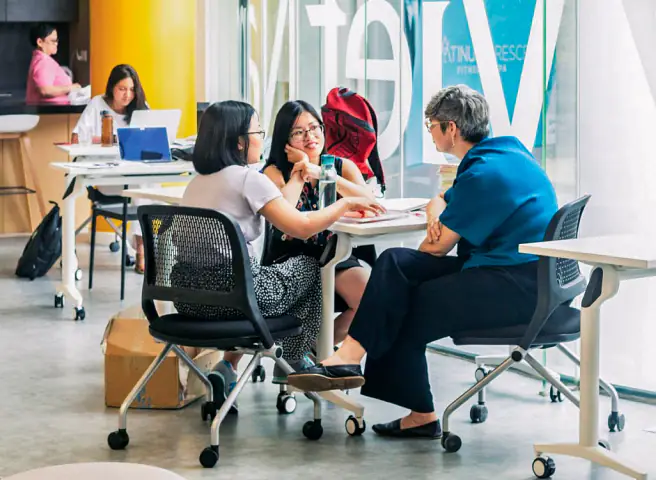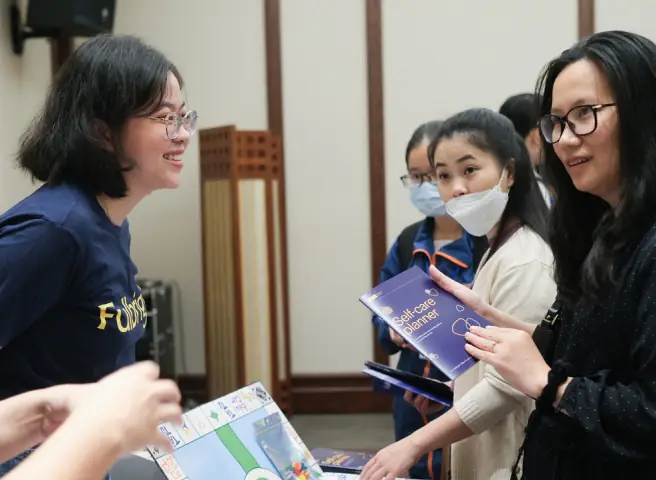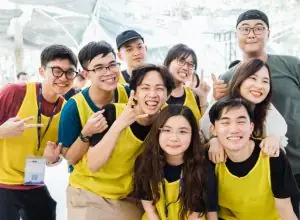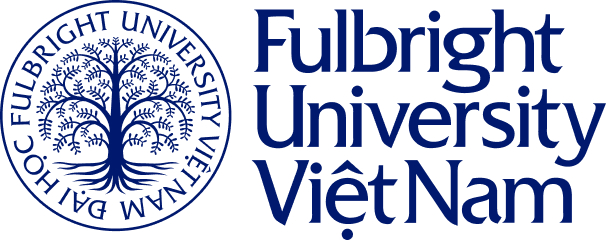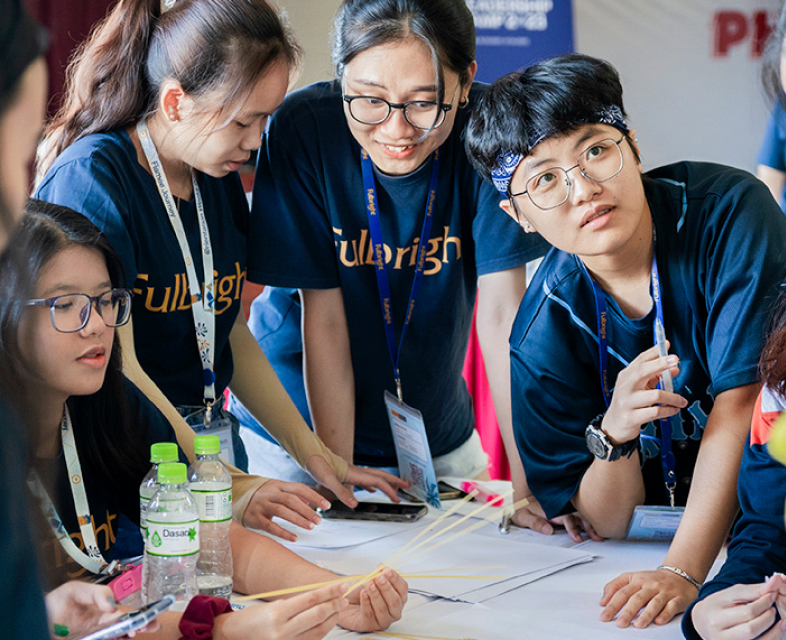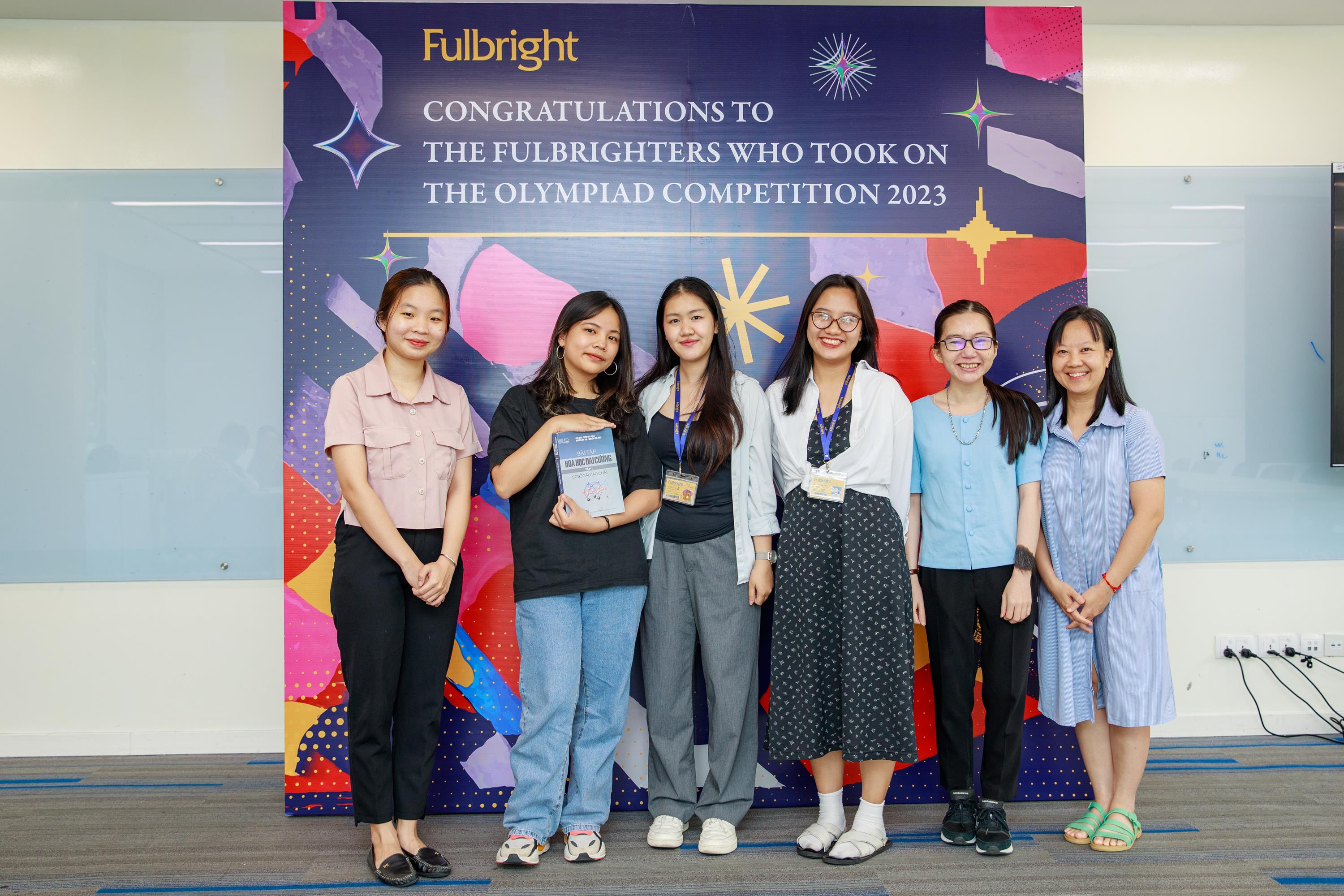
At Fulbright University Vietnam, the faculty team aspires to create an ecosystem of knowledge about history and culture, and promote experiential learning both inside the classroom or in the field.
For example, three months ago, Dr. Nam Nguyen and Dr. Andrew Bellisari, two founding faculty members of Fulbright and key architects of the core course on Vietnamese Studies, took their students to Hue. The field trip immersed students in an experiential learning space to explore culture and history through multi-faceted lenses.
This time, Fulbright students learned about the traditional culture of Vietnam through the “Cultural heritage and Contemporary Arts” talk, conducted by an unpredictable guest, Artist Nguyen Nhat Ly. It is unpredictable because Nguyen Nhat Ly is a Vietnamese French artist who always draws inspirations from traditional culture to shape his arts and present it in a modern way.

Artist Nguyen Nhat Ly
Professor Nguyen envisioned the French-Vietnamese artist would serve as a “tough case” for his students. “Tough” is not because how surrealistic Nguyen Nhat Ly’s arts-making is. Professor Nguyen wants his students to approach traditional cultural arts through lenses distinct from the mainstream. His students, who are used to living in the digital age and listening to K-pop or Western music, might find Nguyen Nhat Ly’s rich artistic space out of their comfort zone.

By exposing his students to unconventional artistic thoughts, Professor Nguyen hopes that his students will form an open mindset in viewing the constant evolution of Vietnamese cultural values.
Tradition is always evolving
Nguyen Nhat Ly is a special artist. Birthed by a Vietnamese father and French mother, he has a unique artistic journey. He used to be a clown and a trumpeter for a circus before studying sound-making and researching traditional music in France. Despite his education at Paris 4 Sorborne, Nguyen Nhat Ly pursued careers as a musical director and a playwright.
The artist started his talk by showing students the opening excerpts from his plays, including Làng tôi, À Ố show, Teh Dar or the contemporary dance show about Cham culture “Palao”. Làng tôi is a visually pleasing circus show about installation arts, set against the musical backdrop of more than 20 traditional musical instruments, while À Ố Show is a circus show that brings together various forms of performing arts, such as pantomime and dance, woven together along melodies of Vietnamese folk opera and hip-hop…
In Palao, life in Cham is captured through special artistic lenses and contemporary music. In the show, performers sing, dance and play traditional musical instruments at the same time, obsessing audience’s minds with red terracotta and white silk costumes (signatures of Cham culture). Teh Dar, another circus show, combines 20 musical instruments of ethnic minority groups, such as Ba Na, Ede, K’ho, Gia Rai, capturing the distinct cultural vibe of Tay Nguyen.
Through those shows, Nguyen Nhat Ly and his team, including director Tuan Le, Nguyen Lan Maurice and Tan Loc dance choreographer, tell stories of different regional cultures – Northern region’s culture in Lang toi, Southern region’s in À Ố Show, Tay Nguyen’s in Teh Dar and Cham’s in Palao – tapping into both traditional and contemporary arts to achieve visually stunning installation art and acoustically pleasant effects.

These shows have put up thousands of performances across 4 continents. Popular reviews describe them as “must-see cultural shows”, praised for its stellar artistic values. From a commercial perspective, those are probably the most successful cases of Vietnamese culture being introduced to international audience.
However, in his talk with Fulbright students, Nguyen Nhat Ly emphasized the rationality of an artist to breathe a contemporary spirit into their work.
“In making arts, an artist has to be able to identify unique beauty – or a cultural identity – to attract both Vietnamese and international audience. Even in the performing format, the beauty has to be contemporary so everyone at any corner of the world can access and understand.”
Nguyen Nhat Ly said he created a map of Vietnamese traditional heritage and cultural legacies. However, he said it was nothing new, since people did not invent tradition to follow. It is life.
After watching the excerpt from “Palao“, a student from the Co-Design year questioned the existence of a culture nobody has been exposed to: “Is anyone preserving such culture?”

The question was exactly what Professor Nguyen Nam was looking for. The question reflects an open-minded thinking, which helps students both become receptive to new ideas and dive in-depth into a topic.
Professor Nguyen Nam concluded, the shows that Nguyen Nhat Ly put on serves as living examples to his students: Tradition does not simply belong to the past. It enriches and nurtures the present. Tradition is not permanent. Instead it is constantly transforming and evolving.
Fulbright students are equipped with top-quality learning and researching opportunities. Fulbright is committed to building an international faculty and providing students with cutting edge knowledge to thrive in a modern society. At the same time, Fulbright’s vision is to educate our students beyond the intellectual mind.
Traditional values are irreplaceable because modern life cannot function without the past. If cultural identities are ignored or forgotten, the acquisition of new knowledge is only “new” in scientific sense.
Before becoming experts or scientists, students need to be grounded in a strong cultural foundation. Vietnamese people need to gain a deep understanding of our cultural heritage and traditions, both their origins and never-ending evolutions.
Linh V* – Bich Tra m
